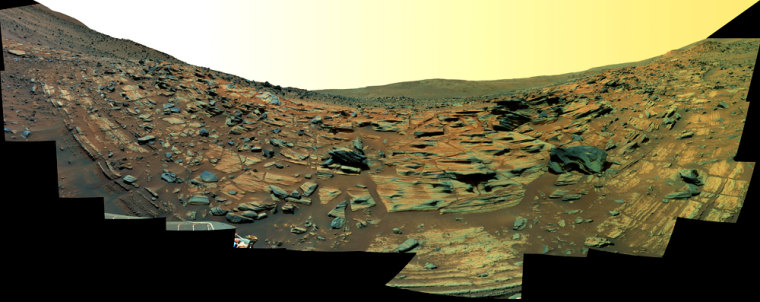NASA's Spirit rover has stumbled upon evidence of an ancient volcanic explosion at "Home Plate," a plateau of layered bedrock near the rover's landing site in Gusev Crater.
The finding lends more evidence to the idea that Mars had a watery past, and marks the first explosive volcanic deposit seen by Spirit or its rover twin, Opportunity. However, scientists have long known ancient Mars was volcanic. The evidence is plain: Olympic Mons, the tallest known volcano and mountain in our solar system.
Steve Squyres of Cornell University, said the rock's layers are probably from a volcanic explosion. The findings are detailed in the May 4 issue of the journal Science.
Evidence shows the area near Home Plate is mostly basaltic rock — indicating water may have mixed with magma beneath the Martian ground. When basalt erupts, Squyres said, it's normally smooth-flowing lava and not blown outward. "One way for basaltic lava to cause an explosion is for it to come into contact with water — it's the pressure from the steam that causes it to go boom."
The explosive basalt isn't the only red flag for water. Another example is the high chlorine content of the rocks, which might indicate that basalt had come into contact with brine, or saltwater.
But one of the strongest pieces of evidence is a "bomb sag" on the lower slopes of the plateau. On Earth, bomb sags form when rocks eject skyward by a volcanic explosion and fall into soft deposits which deform as they land.
Spirit and Opportunity are in their fourth year of exploring Mars. As of April 26, Spirit had spent 1,177 sols, or Martian days, on the surface of Mars and had driven 4.4 miles, and Opportunity had spent 1,157 sols and driven 6.5 miles.
"Considering their age, both rovers are in good health," said John Callas, project manager of the Mars Exploration Rover mission at NASA's Jet Propulsion Laboratory, Pasadena, California.
